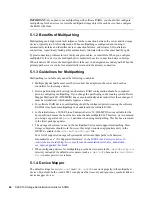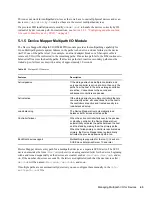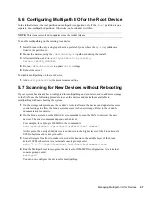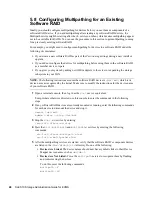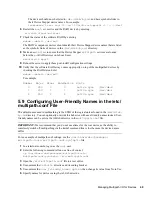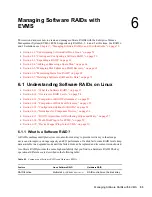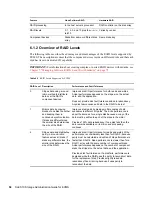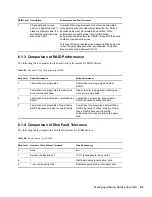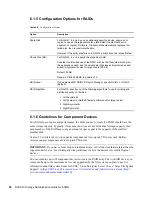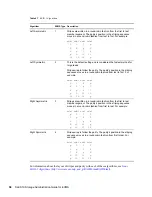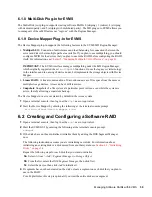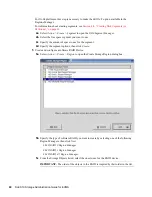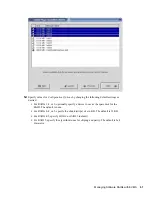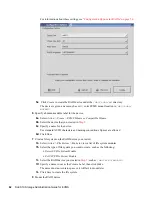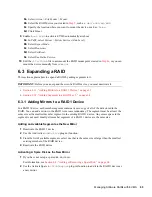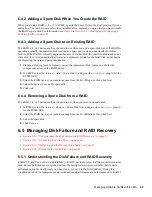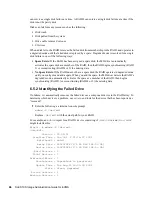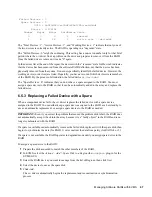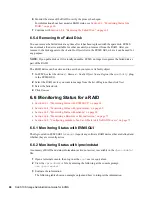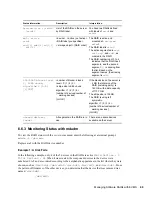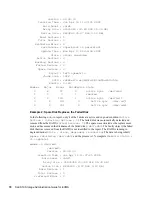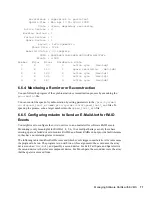
56
SLES 10 Storage Administration Guide for EVMS
no
vd
ocx (
E
NU)
9
Jan
uar
y 2
007
6.1.5 Configuration Options for RAIDs
Table 6-5
Configuration Options
6.1.6 Guidelines for Component Devices
For efficient use of space and performance, the disks you use to create the RAID should have the
same storage capacity. Typically, if component devices are not of identical storage capacity, then
each member of the RAID uses only an amount of space equal to the capacity of the smallest
member disk.
Version 2.3 and later of
mdadm
supports component devices up to 4 TB in size each. Earlier
versions support component devices up to 2 TB in size.
IMPORTANT:
If you have a local disk, external disk arrays, or SAN devices that are larger than the
supported device size, use a third-party disk partitioner to carve the devices into smaller logical
devices.
You can combine up to 28 component devices to create the RAID array. The
md
RAID device you
create can be up to the maximum device size supported by the file system you plan to use. For
information about file system limits for SUSE
®
Linux Enterprise Server 10, see “Large File System
Support” in the
SUSE Linux Enterprise Server 10 Installation and Administration Guide.
(http://
www.novell.com/documentation/sles10)
.
Option
Description
Spare Disk
For RAIDs 1, 4, and 5, you can optionally specify a device, segment, or
region to use as the replacement for a failed disk (the member device,
segment, or region). On failure, the spare disk automatically replaces the
failed disk, then reconstructs the data.
However, if the parity disk fails on a RAID 5, parity cannot be reconstructed.
Chunk Size (KB)
For RAIDs 0, 4, or 5, specify the stripe size in KB.
Consider the intended use of the RAID, such as the file system block size,
the applications used, and the actual data (file sizes and typical reads and
writes). A typical write size for large files is 128 KB.
Default: 32 KB
Range: 4 KB to 4096 KB, in powers of 2.
RAID Level
If you selected
MD RAID 4/5 Region Manager
, specify
RAID 4
or
RAID 5
(default).
RAID Algorithm
For RAID 5, specify one of the following algorithms to use for striping and
distributing parity on the disk.
Left Asymmetric
Left Symmetric (Default, fastest performance for large reads)
Right Asymmetric
Right Symmetric
Summary of Contents for LINUX ENTERPRISE SERVER 10 - STORAGE ADMINISTRATION GUIDE FOR EVMS
Page 4: ...novdocx ENU 9 January 2007 ...
Page 8: ...8 SLES 10 Storage Administration Guide for EVMS novdocx ENU 9 January 2007 ...
Page 10: ...10 SLES 10 Storage Administration Guide for EVMS novdocx ENU 9 January 2007 ...
Page 40: ...40 SLES 10 Storage Administration Guide for EVMS novdocx ENU 9 January 2007 ...
Page 52: ...52 SLES 10 Storage Administration Guide for EVMS novdocx ENU 9 January 2007 ...
Page 74: ...74 SLES 10 Storage Administration Guide for EVMS novdocx ENU 9 January 2007 ...
Page 84: ...84 SLES 10 Storage Administration Guide for EVMS novdocx ENU 9 January 2007 ...

